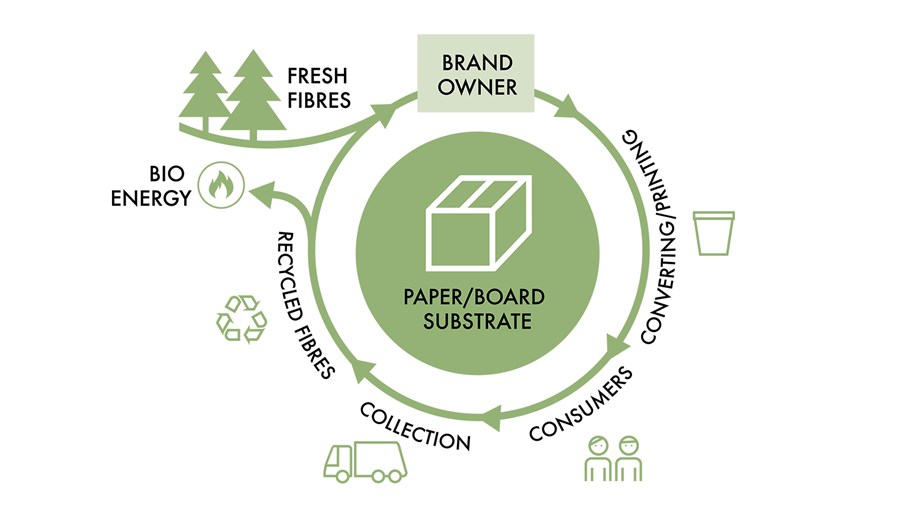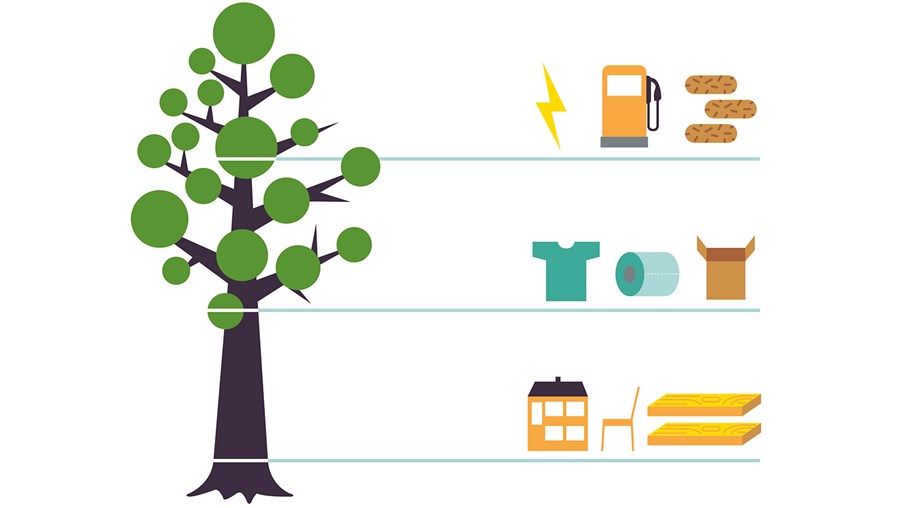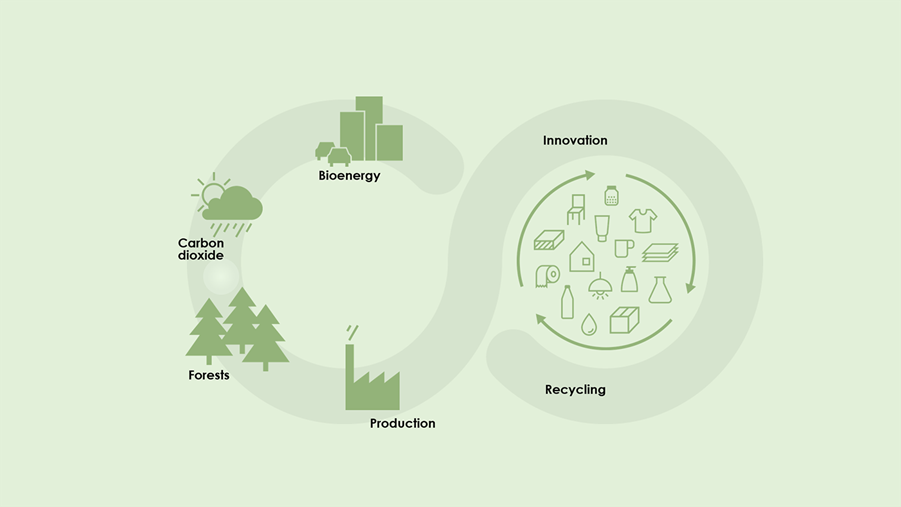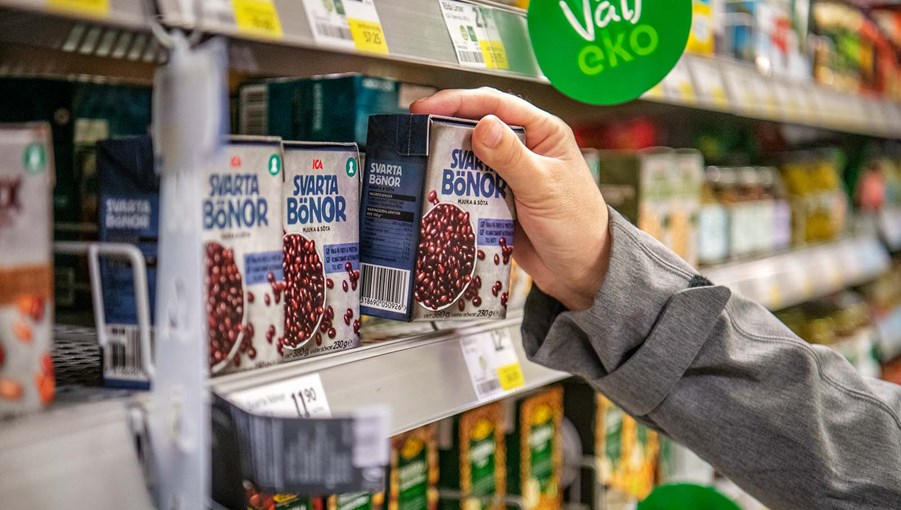
Forest-based products are all part of a circular ecocycle that involves several players in society. Here is the path of paper packaging.
Fresh fibres are delivered as a raw material from forestry.
- The pulp and paper mill makes the packaging material from fresh and/or recycled fibre.
- The brand owner decides what the packaging should look like and what functions it should have.
- In the conversion and printing processes, ink, sticky labels and other things are added to the packaging material. In this, both the brand owner and the printer have a great responsibility to design the product so that it can easily be recycled and thereby retain its high fibre quality.
- The consumer uses the packaging, and then plays a crucial part in whether the paperboard is recycled and used to make new materials. If the paperboard is discarded in household waste instead of at a recycling station, it becomes bioenergy. If it is put in recycling, it is 80 per cent likely to be used for a new material.
- The packaging is first collected and then sent to a paper recycling mill from the recycling stations. Here strong, reusable fibres are separated from spent ones. A wood fibre can be reused 7 times on average.
- Recycled fibre is used to make new materials.
- The spent fibre is used as bioenergy and becomes part of a new ecocycle.


